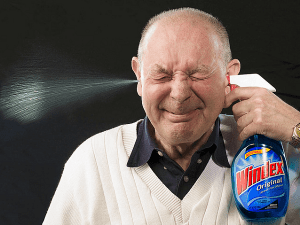Let’s cut to the chase, ear and nose hair exist. It’s just something that happens. What you might not know is why you have ear or nose hair and why it insists on sprouting in strange tuffs, weirdly protruding from facial areas unbeknownst to most women. While anyone can have ear and nose hair, it is thought to be inherited from the father’s side, and therefore much more likely to plague men, especially as they get older and wiser.
These tiny hairs are helpful in filtering air particles of dust and pathogens, and can help you stay in better health. The problem is when they decide to grow from docile hairs into lofty lumps. Then, the only real course of action is to remove them. While you might be okay with this unique trait, most men will go about removing ear and nose hair in one of two ways; neither is glamorous but it is necessary male grooming.
Let’s look at what you can do…
First Tip: Basic Hair Hygiene and Protocol
Whenever you are working with body hair, hygiene is important. When you remove hair, no matter what method you use, you open pores and putting yourself at risk of inflammation or infection. Always use clean tools, and switch out the tools where possible when working on a new area (such as going from ear to ear, or ear to nose). This prevents contamination and will localize infection to one area; if you have an infection, seek a doctor’s advice.
The ears and nose are great at preventing infection, but that doesn’t mean that when they are infected, they can’t escalate quickly and painfully.
These bug filters mean that any signs of inflammation should be treated quickly. The ear and nose cavities are notorious for creating a whole host of symptoms that may make you think there is something worst going on; think of how these are connected. Earache may pose as toothache, sinus infections are horribly painful and you might be treating them as migraines instead. Cleaner ears and noses might also relieve other symptoms as an added bonus!
So what are your hair removal options?
Option 1: Trimming Ear and Nose Hair
The first way, and the soundest advice, is to take a pair of small grooming scissors and trim the nose and ear hair that you can see. As these hairs are beneficial, you do not want to go too far, just attend to anything you can see from the outside. Hold the grooming scissors in one hand, and use a magnifying or grooming mirror in the other to get a closer look (didn’t we say this wasn’t glam?). Avoid the temptation to dig around with scissors, and consider step two if this doesn’t do the trick.
Repeat this process as needed; this is best for beginners or those will light growth.
Option 2: Shaving Ear and Nose Hair
This next option is ideal if you are a long-term sufferer, or find that your hair grows back quickly or thick.
Invest in a quality nasal trimmer or electric razor that has attachment specifically shaped for the ears and nose. These will be narrow sheers with a safety attachment. This will get to the root of the problem, and will shave inside the ear canal, so it is important to use the correct tools. Do not force the trimmer or razor into the ear, and always follow the directions for that device, but you should be able to judge how far to go by how comfortable you are.
Remember:
You should never use a regular razor, and you should never tweeze inside your ears, as this will damage fragile ear canals. If you can tweeze your nose hairs without crying, then you must have balls of steel! Waxing, hair removal creams, treading, and other popular methods are not recommended; so try these, or consider a salon appointment so that you can reduce the hair without causing further problems!
How to Clean Your Ears
As you will be getting into the thick of it, now is also a great time to look at how to clean your ears correctly, as many guys tend to forget this vital area. If you have problems with hearing, are prone to ear infections, or are generally looking to feel cleaner, these simple steps will help you get back on track. The ears are usually self-regulating, but occasionally is a great way to cover all the bases.
Do not use these methods more than is strictly necessary or you might stimulate the glands that secrete wax, and cause further build-up.
Q-tips are cotton swabs that are often said to do more damage than good, but if you are looking for an easy and cheap way to clean your ears then follow this advice. Do not force the Q-tip into your ear canal; use its dexterity instead to clean inside the immediate ear area and canal, around the outside of the ear and make sure you reach into the crevices at the top of the outer ear.

Photo credit: Flicker
Warning: Not advised, but wouldn’t life be much simpler?
If you want a refreshingly good clean, use salt-water solution (1 tsp. Of salt per half or quarter cup of water), or a low-abrasive cleaner like hydrogen peroxide (3% available from drug stores), and dip you Q-tip in this formula. These will help to get rid of any bacteria that might be in the hair or ear canal, and should be washed away with water after. You can do this by using a new Q-tip and dipping it in water and repeating the steps.
So there you have it, every aspect of your ears and nose is attended too, and you might have prevented a nasty infection in the first place! If you want some more pro tips on how to keep in touch with your male grooming, The Ultimate Guide to Grooming can help you stay on track with actionable, expert techniques.


